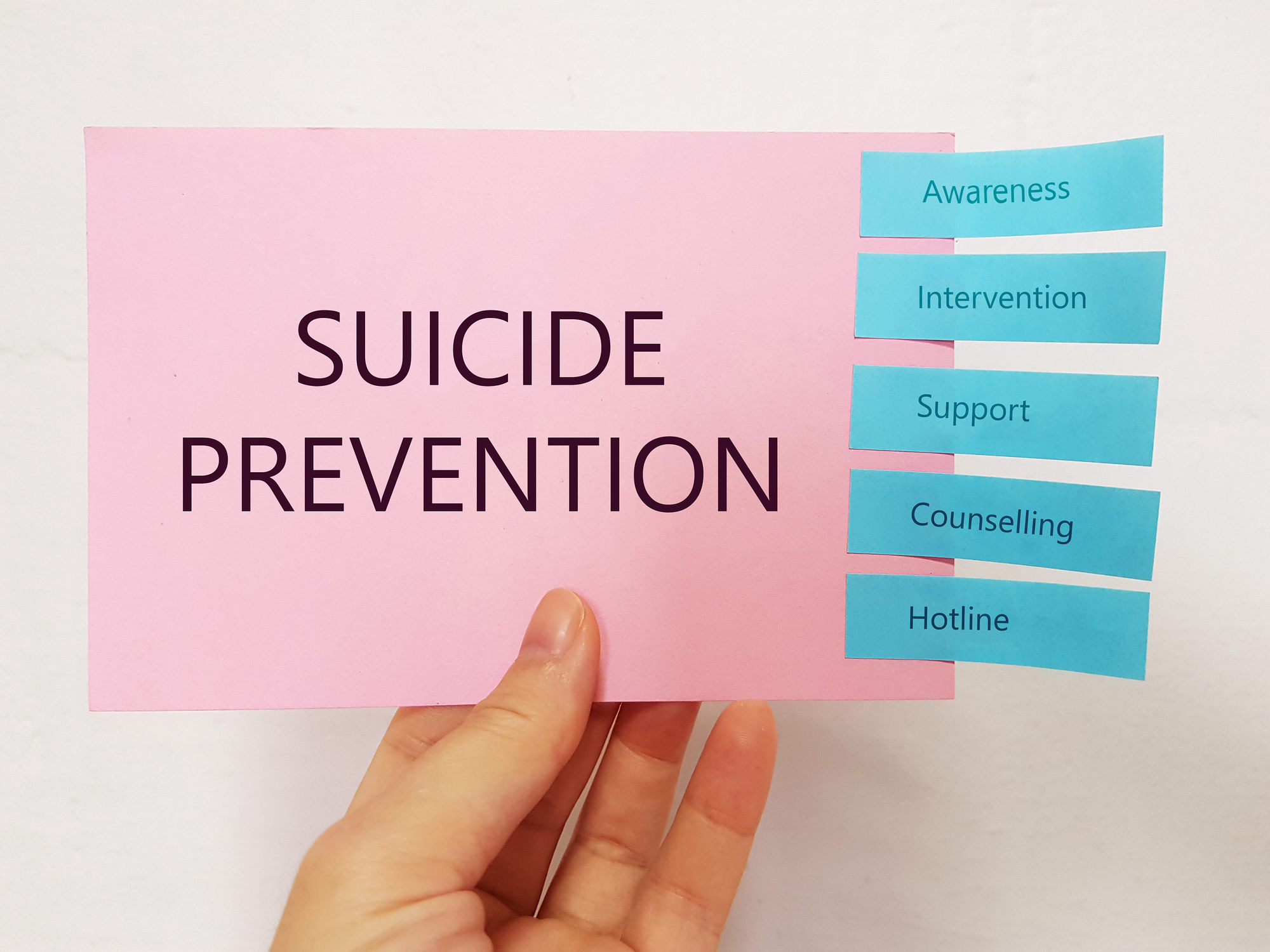
Singapore, 9 May 2022 (Monday) – More than 8 in 10 Singaporeans associate suicide with stigma and only one in every three Singaporeans “will do something to help” someone who shares personal thoughts of suicide. Less than 1 in 10 think the effectiveness of support in Singapore for a person facing a crisis and thinking about or affected by suicide, is high. A study conducted by the Singapore Management University (SMU) revealed these perceptions of suicide in a city known for its cosmopolitan vibrancy, high quality of life and educated workforce.
With the Samaritans of Singapore (S.O.S.) as her supporting partner, SMU Principal Lecturer of Statistics, Rosie Ching, created and carried out the nation-wide study, named “Save.Me.” with her 62 students in January and February this year, interviewing 2,960 people across Singapore, on the topic of suicide. Ms. Ching and her students conducted the surveys through face-to-face interviews, telephone calls and Zoom. The survey results are available at www.screeningstatistics.com/saveme.
Save.Me. delved into knowledge levels of signs of suicide, beliefs propagated about suicide, their preferred platforms for reaching out for help, the level of support available to people in crisis, and the efficacy of such support channels. It adhered closely to the demographics of Singapore with regard to gender, race, age and found that more than 8 in 10 (83%) in Singapore believe in the existence of stigma associated with suicide. Those with no connection to suicide have a significantly more negative attitude towards suicide than those with immediate family who attempted or took their lives and those with friends who did the same.
Overall, more than 3 in 4 Singaporeans (77%) rate their level of knowledge about suicide as below average. People with more intimate connections to suicide (from immediate family to relatives to friends) cite “No outreach or education” as the top reason for their low knowledge levels. For everyone who would avoid someone suicidal or in a crisis, more than 70% say it is their fear of making the affected person worse, their lack of ability to do anything, and their lack of knowledge.
The most outstanding myth believed by Singaporeans is that that talking about suicide may give someone the idea. People with immediate family connected to suicide form the highest proportion who believe this, at 70%.
Less than 1 in 10 think highly of the effectiveness of support in Singapore for a person facing a crisis and thinking about or affected by suicide, with the overall effectiveness of such support in Singapore rated as significantly lower than average by all profiles of respondents.
Commented Mr Gasper Tan, Chief Executive, Samaritans of Singapore (SOS), “The results from the survey confirms what many of our mental health experts are saying: there is an unprecedented mental health crisis in our country, accentuated by the pandemic. Over the last two years, SOS has seen an increase of 89% in at-risk individuals seeking support. As a community, we must continue to galvanise our resources to strengthen and transform our health care ecosystem to address mental health and suicide holistically and accessibly.”
According to Professor Lieven Demeester, Associate Provost (Teaching and Learning Innovation) at SMU, “It is great that SMU’s collaboration with SOS, has yielded such valuable insights that may be usefully applied towards more effective prevention of suicide.”
The older a person, the more he believes in the unpredictability of suicides. Yet overall, more than 9 in 10 (92%) believe that suicide can be prevented. The younger a person, the higher the percentage who believe suicide can be prevented: Gen Z (93.3%) to Millennials (93%) to Gen X (90%) to Baby-Boomers (84%). The more years of education, the greater the percentage who believe suicide can be predicted and prevented as well, with the highest at 96% of those with postgraduate education.
Said Ms. Ching, “The memory of three special individuals lost to suicide drew me to this realm of suicide. As I learnt from SOS, each of them only wanted the pain, not their life, to stop, but they saw no way out. It is to each of their memories I dedicate every tear shed in Save.Me. I know those whom I have lost would want anyone in crisis to be pulled from the brink, that their pain be addressed, that everyone may know where, how to seek help and support. So that healing may begin.”
Key Findings:
- More than 8 in 10 (82.87%) believe in existence of stigma associated with suicide in Singapore. All profiles show strong majorities who believe in the stigma of suicide in Singapore.
- Only one in every three Singaporeans ”will do something to help“ someone who shares personal thoughts of suicide. “Offering presence and continual support” is the top most immediate and effective action, followed by a fairly distant second-placed “Encourage professional support, e.g. mental health counsellors”. Together they form almost 3 in 4 of Singaporeans’ responses to someone in a crisis. Only about a third (33%) would encourage professional support.
- For every two in three persons who would not support and save someone who is in a crisis or suicidal, more than 70% say it is their fear of making the suicidal person worse, their lack of ability to do anything, and their lack of knowledge.
- Almost 3 in 4 of people with no connection to suicide believe suicide can be predicted. The older an individual, the more he does not believe suicide can be predicted. The greater the years of education, the greater the belief that suicide can be predicted as well, from about 3 in 10 for those with no education, rising to more than 7 in 10 for those with at least a bachelor’s degree.
- More than 9 in 10 (92%) believe that suicide can be prevented. The younger a person, the higher the percentage who believe suicide can be prevented: Gen Z (93.3%) to Millennials (93%) to Gen X (90%) to Baby-Boomers (84%). The more years of education, the greater the percentage who believe suicide can be prevented, with the highest at almost 10 in 10 (96%) of those with postgraduate education.
- Preferred sharing platforms: Overall, 6 in every 10 choose “Physical, F2F” as their most comfortable platform to talk to someone about their problems. Second place of text messaging goes for Gen Z and Millennials, but not so for Gen X and Baby-boomers, who prefer the telephone or a hotline. Statistically, text messaging to Gen Z and Millennials is what the telephone or a hotline is to Baby-boomers.
- Across all age bands, “a friend” is the person they will most likely turn to about problems. Amongst all age groups, only 6.35% choose a trained counsellor, with Gen X the most open to them at 9.47%.
- 67.43% would be more willing to talk to someone about their problems if their identity were anonymous, a common thread across genders, ages, races, religions, professions, educational qualifications.
- Effectiveness of support: Less than 1 in 10 think the effectiveness of support in Singapore for a person facing a crisis and thinking about or affected by suicide, is high. In fact, 74% overall rate the effectiveness of such support in Singapore as significantly lower than average. This low rating stretches across all profiles connected to suicide.
Background Information on Save.Me
In January 2022, SMU students in a unique Statistics module called STATISTICS-X created by Rosie Ching, Principal Lecturer of Statistics at SMU, collaborated with Samaritans of Singapore to conduct Save.Me., an original nationwide study.
With the support of SOS, Ms. Ching spent 13 months in total crafting this project from the outset at the request of SOS CEO Mr. Gasper Tan in December 2020.
At both the kick-off and mid-term of the project, Ms. Ching invited the Samaritans of Singapore to SMU, who warmly and enthusiastically supported and guided her and students about managing persons in distress, and learn about the meaningful work and outreach efforts of the SOS through the many years in Singapore.
Ms Ching and her students collectively invested more than 3.5 months of intense work in the study, survey and analysis, gathering data from more than 2,960 interviews in 5 weeks.
